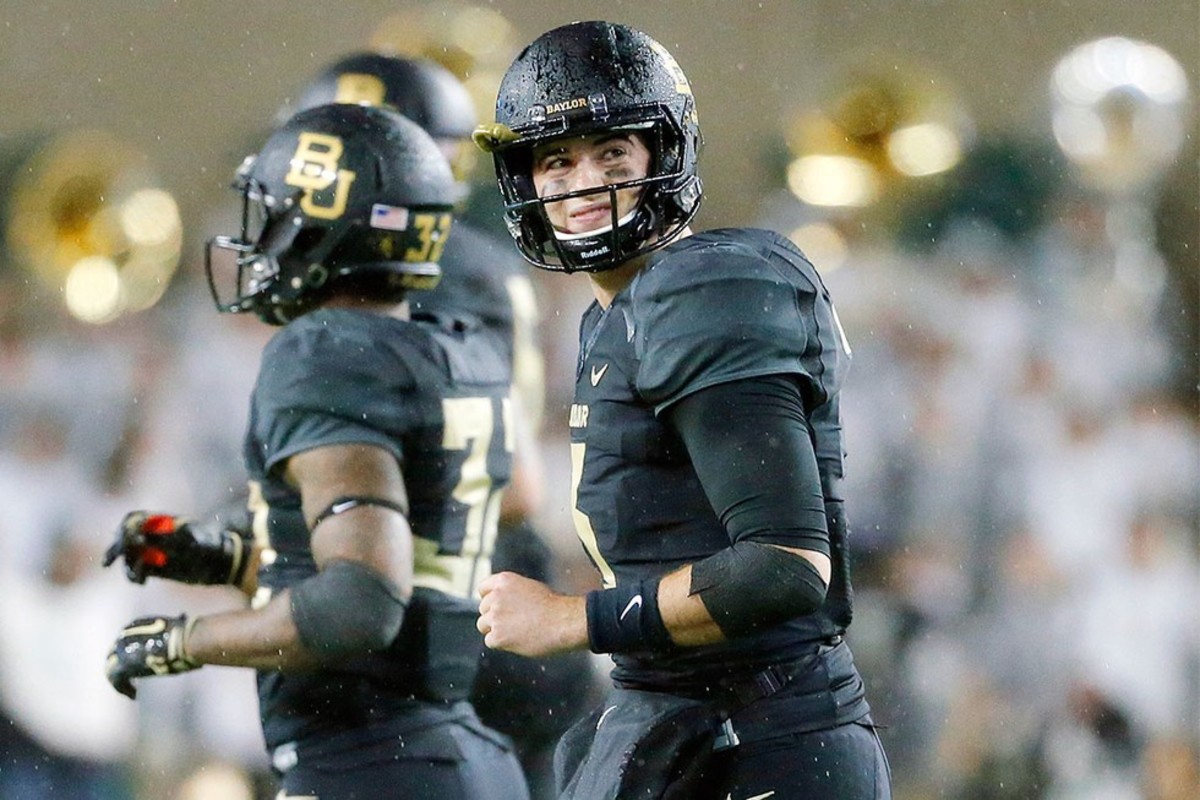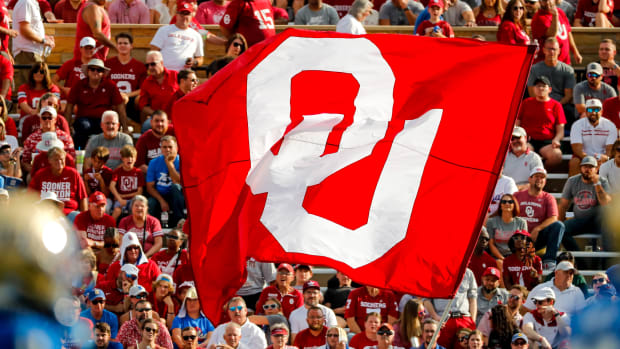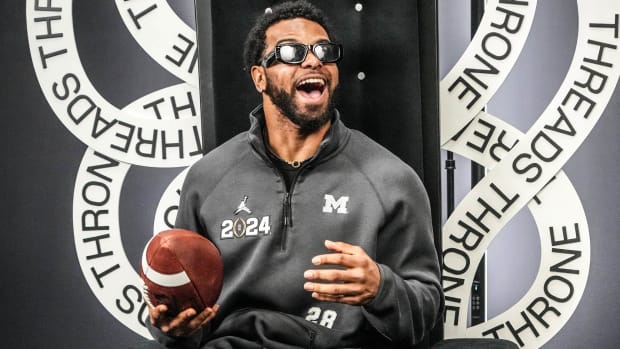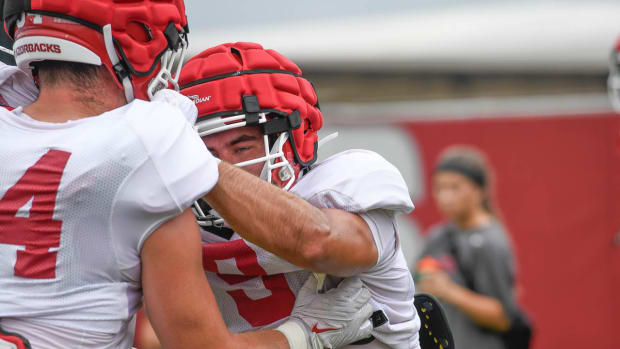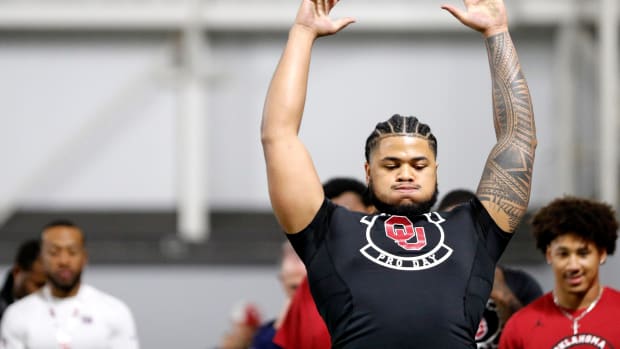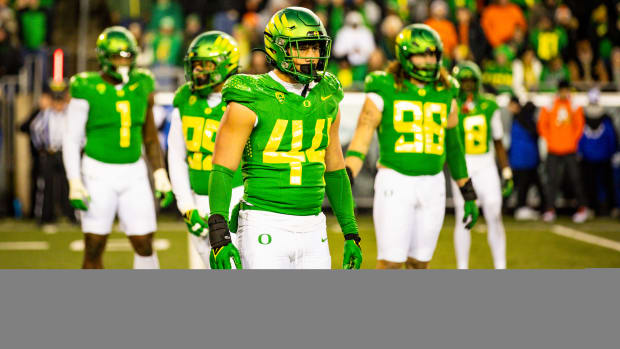No need for NCAA to punish Baylor—scandal, transfers are already crippling the program's future
[video: 13724879]
Even before the principals had all shed their jobs, the calls came. Hours after Baylor's board of regents had announced its intent to fire football coach Art Briles, to demote chancellor Ken Starr and to sanction athletic director Ian McCaw—all are since gone—the tweeters and Facebookers and talk-show callers implored the NCAA to do something so that nothing like this could ever happen again.
This desire ignored the fact that no NCAA punishment will ever keep self-interested people from doing the wrong thing to further their own interests. The NCAA's penalty system is set up in such a way that the guilty rarely face harsh consequences. So the NCAA could have slapped Baylor with sanctions similar to the ones it placed on Penn State in the wake of the Jerry Sandusky scandal in 2012, but those sanctions wouldn't have actually discouraged anyone from doing the things that put Baylor in its current mess. NCAA sanctions would have taken away scholarship opportunities from students still in high school. That punishes no one responsible and solves precisely nothing.
What the crowd screaming, "Do something, NCAA" actually wanted was for Baylor to be bad at football. Some in this crowd were disgusted by the idea of ignoring or brushing aside violence against women for the sake of winning games, and they felt that if football were taken down a peg, coaches and players would be held more accountable because winning football games would basically be off the table. Some in this crowd like teams that the Bears have been beating recently, and they wanted Baylor taken down a peg to make it easier to win the Big 12 title. Whatever the reason, the group pushing for NCAA action is going to get its wish without anyone in Indianapolis lifting a finger.
Baylor still might be good in 2016. The Bears bring back plenty from a team that went 10–3 last season. The entire Briles staff remains in place with former Wake Forest coach Jim Grobe minding the store for the next few months. But the decision Thursday by sophomore quarterback Jarrett Stidham to leave Baylor is just the latest reason that the scandal ultimately will take Baylor football back to the days before Briles arrived.
Stidham was supposed to replace Seth Russell in 2017 and keep the Bears' offense humming. He offered a preview last season when he replaced an injured Russell for three games before getting hurt himself. The succession plan was in place, and it seemed foolproof.
Meanwhile, Baylor was finally reaping the recruiting rewards of Big 12 titles in 2013 and '14. The Bears had signed two receivers (Tren'Davian Dickerson and Devin Duvernay) ranked in the top five at that position by Scout.com. They had signed Patrick Hudson, Scout.com's No. 3 offensive guard. These were the kind of players who never would have considered Baylor even five years ago. "The Baylor brand is hot," Briles said on National Signing Day. "Our facilities and the direction of our university are on the dynamic edge, and it's going to be a continuing trend to see Baylor at the top of the recruiting classes, year-in and year-out."
TREVOR KNIGHT: Why grad transfers are right for college football
Five months later, that football future looks bleak. Half of the 22-player signing class is gone. Two members were dismissed by Baylor after they were accused of sexual misconduct. (They've denied wrongdoing.) Dickerson, who enrolled early and took part in spring practice, has transferred to Houston. Eight fellow signees asked for and received releases from their letters of intent. Nearly everyone who had options opted to leave. Duvernay and his brother Donovan went to Texas. So did Hudson and fellow offensive lineman J.P. Urquidez. Cornerback Parrish Cox will go to Oklahoma. Defensive end Brandon Bowen will go to TCU. Defensive end DeQuinton Osborne will go to Oklahoma State. Tailback Kameron Martin will go to Auburn. Of the nine signees lost, eight will play for other Big 12 schools and try to hand Baylor losses.
Where will Stidham go? The mechanics of his decision could leave the rest of the Big 12 open to him with three years of eligibility remaining. Stidham will be a hot commodity throughout the country, but if he chooses to spend the fall 2016 semester at a community college he could enroll at his next school with three years to play regardless of conference. Stidham, as an undergraduate transfer, will have to sit out the 2016 season if he goes anywhere in the FBS now. He could play a season of juco ball, but that would count as one of his four years to play. If he attends a juco and doesn't play this fall, Stidham can use 2016 as a redshirt year because the NCAA gives athletes five years to play four.
Sue Ogrocki/AP
Stidham could also transfer to schools in nine FBS conferences right now and use 2016 as his redshirt year, but he could not do that in the Big 12. Big 12 transfer rules require players transferring between conference schools to lose a year of playing eligibility. This is why Oklahoma quarterback Baker Mayfield initially lost a year while sitting out 2014 after transferring from Texas Tech. Mayfield got 2014 turned into a redshirt year because of a conference rule tweak that lifted the penalty for walk-ons leaving to be walk-ons elsewhere in the league. Stidham, who was on scholarship at Baylor, won't be able to do that. But if he spends this fall at a juco, he's free to transfer to another Big 12 school and play in 2017 as a redshirt sophomore instead of as a true junior.
Meanwhile, Baylor will lose most of its talent core after this season. Russell is a senior. So is tailback Shock Linwood. Receiver KD Cannon is a junior but could move on to the NFL. The defense is senior-heavy. Into that void will wander the bottom half of the 2016 recruiting class and a 2017 class that currently has one commitment. There is no telling how many players will leave after Baylor picks a new coach. The remainder of the Briles staff likely will be gone by early December, and a new staff will have to hustle to salvage what's left of the class of 2017 recruiting cycle.
PRICE: The end of the Baylor moment: How Baylor marred itself in shame
It's possible Baylor will hire a coach on the rise who can begin the rebuild with the 2018 recruiting cycle, but it's just as likely this job won't attract a strong candidate pool in the wake of the scandal. Baylor has an excellent location and excellent facilities, but the next coach will have to fight negative recruiting for years. The chances are much higher that Baylor's program in three years will look much more like the Baylor that toiled at the bottom of the Big 12 before Briles arrived.
So to those who wished the NCAA would return Baylor football to doormat status, you're on your way to getting your ultimate wish. But the NCAA didn't have to do anything. The scandal did it all by itself.
